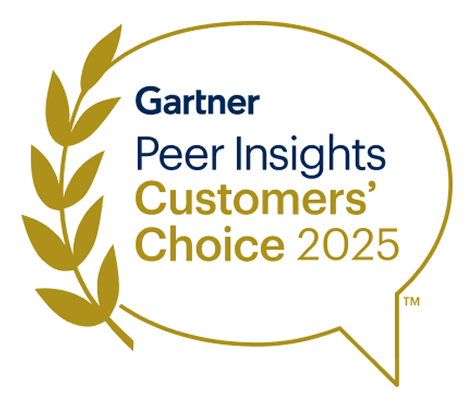CISO Challenges of 2025 and How to Overcome Them
The evolving digital landscape for cloud-first companies presents unprecedented challenges for chief information security officers (CISOs). The rapid adoption of AI-powered systems and the explosive growth of cloud-based deployments have expanded the attack surface, introducing novel risks and threats.
According to IBM's 2024 "Cost of a Data Breach Report," the average cost of a cloud data breach soared to $4.88 million - prompting a crucial question: Is your organization prepared to secure its expanding digital footprint?
Regulatory frameworks and data privacy standards are in a constant state of flux, requiring CISOs to stay agile and proactive in their approach to compliance and risk management.
This article explores the top challenges facing CISOs today, illustrated by real-world incidents, and offers actionable solutions for them. By understanding these pressing concerns, organizations can stay proactive and secure their environments effectively.
Top Modern Challenges Faced by CISOs
Modern CISO concerns stem from a combination of technical complexity, workforce behavior, and external threats. Below, we explore these challenges in detail.
1. AI and Large Language Model (LLM) Data Protection Challenges
AI tools like large language models (LLMs) have become integral to modern organizations; however, they have also introduced significant risks to data security. In 2024, for example, Microsoft's AI system, Copilot, was manipulated to exfiltrate private data and automate spear-phishing attacks, revealing vulnerabilities in AI-powered systems.
Furthermore, insider threats have increased as employees misuse AI tools to leak sensitive data. For instance, the AI malware Imprompter exploited LLMs to facilitate data exfiltration, causing data loss and reputational harm.
Robust governance frameworks that restrict unauthorized AI system access and implementation of real-time activity monitoring are essential to mitigate such risks.
2. Unstructured Data Management
Unstructured data (e.g., text, images, audio, and video files) is increasingly stored across cloud platforms, making it difficult to secure. Take the high-profile breach in 2022 involving Turkish Pegasus Airlines. It compromised 6.5 TB of unstructured data stored in an AWS S3 bucket, ultimately leading to 23 million files being exposed.
This incident highlighted the dangers of poorly managed unstructured data, which can lead to severe reputational damage and potential regulatory penalties. Addressing this challenge requires automated classification and encryption tools to secure data at scale. In addition, real-time classification and encryption ensure sensitive information remains protected in diverse, dynamic environments.
3. Encryption and Data Labeling
Encryption and data labeling are vital for protecting sensitive information, yet many organizations struggle to implement them effectively.
IBM's 2024 “Cost of a Data Breach Report” reveals that companies that have implemented security AI and automation “extensively” have saved an average of $2.2 million compared to those without these technologies.
The EU’s General Data Protection Regulation (GDPR) highlights the importance of data labeling and classification, requiring organizations to handle personal data appropriately based on its sensitivity. These measures are essential for protecting sensitive information and complying with all relevant data protection regulations.
Companies can enforce data protection policies more effectively by adopting dynamic encryption technologies and leveraging platforms that support automated labeling.
4. Regulatory Compliance and Global Standards
The expanding intricacies of data privacy regulations, such as GDPR, CCPA, and HIPAA, pose significant challenges for CISOs. In 2024, Microsoft and Google faced lawsuits for the unauthorized use of personal data in AI training, underscoring the financial and reputational risks of non-compliance.
Companies must leverage compliance automation tools and centralized management systems to navigate these complexities and streamline regulatory adherence.
5. Explosive Data Growth
The exponential growth of data creates immense opportunities but also heightens security risks.
As organizations generate and store more data, legacy security measures often fall short, exposing critical vulnerabilities. Advanced, cloud-native, and scalable platforms help organizations scale their data protection strategies alongside data growth, offering real-time monitoring and automated controls to mitigate risks effectively.
6. Insider Threats
Both intentional and accidental insider threats remain among the most difficult challenges for CISOs to address.
In 2024, a North Korean IT worker, hired unknowingly by an American company, stole sensitive data and demanded a cryptocurrency ransom. This incident exposed vulnerabilities in remote hiring processes, resulting in severe operational and reputational consequences.
Combatting insider threats requires sophisticated behavior analytics and activity monitoring tools to detect and respond to anomalies early. Security platforms should provide enhanced visibility into user activity, enabling organizations to mitigate such risks and secure their data proactively.
7. Shadow Data
In the race to adopt new cloud and AI-powered tools, users are often generating, storing, and transmitting sensitive data in services that the security team never approved or even knew existed. This includes everything from unofficial file-sharing apps to unsanctioned SaaS platforms and ad hoc API integrations.
The result is shadow IT, shadow SaaS, and ultimately, shadow data: sensitive or regulated information that lives outside the visibility of traditional security tools. Without knowing where this data resides or how it’s being accessed, CISOs cannot protect it. These unknown data flows introduce real compliance, privacy, and security risk.
It is critical to expose and classify this hidden data in real time, in order to give security teams the visibility they need to secure what was previously invisible.
Overcoming the Challenges: A CISO's Playbook in 6 Steps
CISOs can follow a structured, data-driven, step-by-step playbook to navigate the hurdles of modern cybersecurity and data protection. However, in today's dynamic data landscape, simply checking off boxes is no longer sufficient—leaders must understand how each critical data security measure interconnects, creating a unified, forward-thinking strategy.
Before diving into these steps, it's important to note why they matter now more than ever: Emerging data technologies, rapidly evolving data regulations, and escalating insider threats demand an adaptable, holistic, and data-centric approach to security. By integrating these core elements with robust data analytics, CISOs can build an ecosystem that addresses current vulnerabilities and anticipates future data risks.
1. First, Develop a Scalable Security Strategy
A strategic security roadmap should integrate seamlessly with organizational goals and data governance frameworks, guaranteeing that risk management, data integrity, and business priorities align.
Accurately classifying and continuously monitoring data assets, even as they move throughout the organization, is a must to achieve sustainable scale. This solid data foundation empowers organizations to quickly pivot in response to emerging threats, keeping them agile and resilient.
The next step is key, as the right mindset is a must.
2. Build a Security-First Culture
Equip employees with the knowledge and tools to secure data effectively; regular data-focused training sessions and awareness initiatives help reduce human error and mitigate insider threats before they become critical risks. By fostering a culture of shared data responsibility, CISOs transform every team member into a first line of defense.
This approach ensures that everyone is on the same page toward prioritizing data security.
3. Leverage Advanced Tools and Automation
Utilize state-of-the-art platforms for comprehensive data discovery, real-time monitoring, automation, and visibility. By automating routine security tasks and delivering instant data-driven insights, these features empower CISOs to stay on top of new threats and make decisions based on the latest data.
Naturally, even the best tools and automation require a strategic, data-centric approach to yield optimal results.
4. Implement Zero-Trust Principles
Implement a zero-trust approach that verifies every user, device, and data transaction, ensuring zero implicit trust within the environment. Understand who has access to what data, and implement least privilege access. Continuous identity and device validation boosts security for both external and internal threats.
Positioning zero trust as a core principle tightens data access controls across the entire ecosystem, but organizations must remain vigilant to the most recent threats.
5. Evaluate and Update Cybersecurity Frameworks
Regularly assess security policies, procedures, and data management tools to ensure alignment with the latest trends and regulatory requirements. Keep a current data inventory, and monitor all changes. Ongoing reviews maintain relevance and effectiveness, preventing outdated defenses from becoming liabilities.
For optimal data security, cross-functional collaboration is key.
6. Encourage Cross-Departmental Collaboration
Work closely with other teams, including IT, legal, compliance, and data governance, to ensure a unified and practical approach to data security challenges. Cooperation among stakeholders accelerates decision-making, streamlines incident response, and underscores the importance of security as a shared enterprise objective.
By adopting this data-centric playbook, CISOs can strengthen their organization's security posture, respond to threats quickly, and reduce the likelihood and impact of breaches. Platforms such as Sentra provide robust, data-driven tools and capabilities to execute this strategy effectively, enabling CISOs to confidently handle complex cybersecurity landscapes. When these steps intertwine, the result is a robust defense that adapts to the ever-shifting digital landscape - empowering leaders to stay one step ahead.
The Sentra Edge
Sentra is an advanced data security platform that offers the strategic insights and automated capabilities modern CISOs need to navigate evolving threats without compromising agility or compliance. Sentra integrates seamlessly with existing processes, empowering security leaders to build holistic programs that anticipate new risks, reinforce best practices, and protect data in real time.
Below are several key areas where Sentra's approach aligns with the thought leadership necessary to stay ahead of modern cybersecurity challenges.
Secure Structured Data
Structured data - in tables, databases, and other organized repositories, forms the backbone of an organization’s critical assets. At Sentra, we prioritize structured data management first and foremost, ensuring automation drives our security strategy. While securing structured data might seem straightforward, rapid data proliferation can quickly overwhelm manual safeguards, exposing your data. By automating data movement tracking, continuous risk and security posture assessments, and real-time alerts for policy violations, organizations can offload these burdensome yet essential tasks.
This automation-first approach not only strengthens data security but also ensures compliance and operational efficiency in today’s fast-paced digital landscape.
Secure Unstructured Data
Securing text, images, video, and other unstructured data is often challenging in cloud environments. Unstructured data is particularly vulnerable when organizations lack automated classification and encryption, creating blind spots that bad actors can exploit.
In response, Sentra underscores the importance of continuous data discovery, labeling, and protection—enabling CISOs to maintain visibility over their dynamic cloud assets and reduce the risk of inadvertent exposure.
Navigate Complex Regulations
Modern data protection laws, such as GDPR and CCPA, demand rigorous compliance structures that can strain security teams. Sentra's approach highlights centralized governance and real-time reporting, helping CISOs align with ever-shifting global standards.
By automating repetitive compliance tasks, organizations can focus more energy on strategic security initiatives, ensuring they remain nimble even as regulations evolve.
Tackle Insider Threats
Insider threats—accidental and malicious—remain one of the most challenging hurdles for CISOs. Sentra advocates a multi-layered strategy that combines behavior analytics, anomaly detection, and dynamic data labeling; this offers proactive visibility into user actions, enabling security leaders to detect and neutralize insider risks early.
Such a holistic posture helps mitigate breaches before they escalate and preserves organizational trust.
Be Prepared for Future Risks
AI-driven attacks and large language model (LLM) vulnerabilities are no longer theoretical—they are rapidly emerging threats that demand forward-thinking responses. Sentra's focus on robust data control mechanisms and continuous monitoring means CISOs have the tools they need to safeguard sensitive information, whether it's accessed by human users or AI systems.
This outlook helps security teams adapt quickly to the next wave of challenges. By emphasizing strategic insights, proactive measures, and ongoing adaptation, Sentra exemplifies an industry-leading approach that empowers CISOs to navigate complex data security landscapes without losing sight of broader organizational objectives.
Conclusion
As new threat vectors emerge and organizations face mounting pressures to protect their data, the role of CISO will become even more critical. Addressing modern challenges requires a proactive and strategic approach, incorporating robust security frameworks, cutting-edge tools, and a culture of vigilance.
Sentra's platform is a comprehensive data security solution designed to empower CISOs with the tools they need to navigate this complex landscape. By addressing key hurdles such as AI risks, structured and unstructured data management, and compliance, Sentra enables companies to stay on top of evolving risks and safeguard their operations. The modern CISO role is more demanding than ever, but the right tools make all the difference. Discover how Sentra's cloud-native approach empowers you to conquer pressing security challenges.
<blogcta-big>








.webp)

.webp)

.webp)

